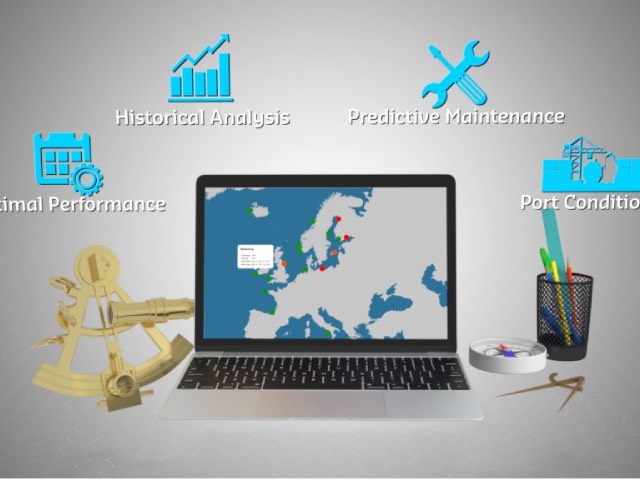Optimarin is leading the way in digitalisation of ballast water treatment with the launch of OptiLink, an innovative system for ship-to-shore data-sharing in this critical area of ship operations.
The advanced digital tool provides real-time monitoring of ballast water treatment systems (BWTS), along with automated data generation and remote connectivity, and is designed to resolve the regulatory compliance headache for ship operators as well as give improved customer support.
OptiLink also offers significant economic spin-offs, such as fuel cost savings, optimised voyage planning and reduced port turnaround times, to boost the cost-efficiency of overall fleet operations.
“The whole aspect of ballast water treatment changes from a manual operation to a system approach where the BWTS and its operations become an integral part of the vessel’s functions,” explains Leiv Kallestad, chief executive of Norwegian ballast water treatment specialist Optimarin.
“This means the BWTS can be managed proactively in support of reduced downtime and reduced fuel consumption, with less hassle as control over the transfer of ballast water in and out of the vessel improves greatly.”
Big Picture
OptiLink connects the BWTS “to the world” either through a vessel’s own communication systems, or an external link installed onboard, allowing for transfer of key operational and performance data to the OptiLink cloud. The users will subsequently be able to connect with the cloud through a secure internet connection.
This gives the vessel crew instantaneous online access to key performance indicators for the BWTS – including water quality and system functionality – through a user-friendly visual interface featuring data transmitted from the ballast water control system.
For the shipowner, OptiLink will also give the ship operator the big picture by providing a fleet-wide overview of ballast water KPIs for each vessel and fleet.
This enables interactive remote support with online software updates for troubleshooting to reduce the need for physical service work on the BWTS, resulting in cost and time savings.
In addition, continuous condition monitoring of the BWTS allows for proactive maintenance to ensure efficient operation of the system by alerting the crew to possible equipment malfunctions.
OptiLink can analyse big data both with respect to system performance and water quality at geographical locations where ballast water operations are ongoing.

Predictability
This enhances the predictability of ballast water operations to give the ship operator greater visibility so voyage planning can be optimised to reduce fuel consumption and downtime.
Another major benefit is that compliance data from the BWTS can be transmitted directly to statutory authorities, which can then provide guidance on corrective action in case of contamination so that eg. a certificate of compliance can be obtained.
This certification can then be communicated to the relevant port authority so that port turnarounds are shortened as the need for lab testing of water quality and onboard inspections is effectively eliminated.
This is particularly significant as the shipping industry faces a 2024 deadline for compliance with an IMO regulation that requires all vessels to conform with a so-called D2 standard specifying the maximum volume of viable organisms in ballast water discharges.
Kallestad points out that, while operators may have a compliant BWTS installed on their vessels, there still remain challenges in ensuring ballast water quality meets local standards that can create logistical difficulties and delays for fleet operations.
“Digitalisation is key to tackle the ballast water treatment compliance issue and Optimarin has developed the first digital solution of its kind that provides data transparency and predictability in this area, while integrating the BWTS into a ship’s control system,” he says.






































